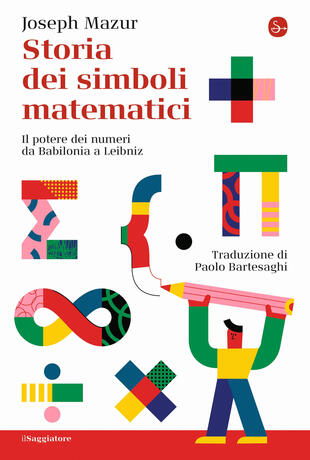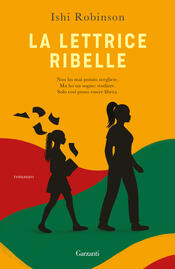

Sinossi
Se non fosse per le fonti, quella dei numeri potrebbe sembrare una storia leggendaria. Nel corso dei secoli, la forza dei simboli matematici ha mutato la nostra comprensione del mondo e la percezione dello spazio e del tempo, intrecciando mente e realtà, fisica e filosofia. In queste pagine Joseph Mazur restituisce a questi strumenti d'uso quotidiano tutta la loro potenza innovativa, investigandone non solo la funzione di calcolo ma anche il ruolo di «ancora visiva a cui si aggrappa la mente nel processo di astrazione del generale dal particolare». Il suo è un racconto attraverso i luoghi e le epoche del linguaggio visivo della matematica, dalle prime apparizioni dei numeri sulle tavolette cuneiformi in Mesopotamia all'invenzione dello zero nell'antica India, fino all'arrivo in Europa nel Basso Medioevo, da dove i simboli sarebbero poi ripartiti per compiere nuovamente il giro del mondo. Una storia abitata da pensatori e filosofi, mercanti e maghi, ovvero dalla folla sterminata di personaggi che hanno contribuito alla scoperta e al perfezionamento di somma e divisione, sottrazione e moltiplicazione, radice quadrata e pi greco. Un'avventura collettiva che ci ha spinto verso nuovi orizzonti e nuove visioni, permettendoci di svelare le associazioni e i labirinti inconsci di cui è composta la nostra realtà.
- ISBN: 8842832340
- Casa Editrice: Il Saggiatore
- Pagine: 392
- Data di uscita: 11-11-2022
Recensioni
This volume revolutionized my understanding of mathematical thought. Following the development of symbols walked me through our primal, unstructured mental evolution of grasping intangible concepts that nevertheless apply to everyday reality, through the human context which fostered their understand Leggi tutto
This is literally a history of mathematical symbols and numbers.
無論中西都一樣,在中世之前,「數學」都是以「文字敘述」的方式來表達的。比如像中國有《九章》、《大衍求一》等,我們雖然可以自詡領先歐洲,但那些都沒有成為我們後來所謂的「一般化」,都是用口訣與正常文句的描述。 讀了本書才知道,歐洲在十六世紀才開始為數學進行「符號化」的規範,加減乘除代數乘冪開方,逐漸成為我們今日所熟悉的形態。在這一連串的發展之後,「符號」成為數理方面的主流,雖然增加了學問的門檻,但這種「一般化」卻創造出了更多人類智慧的發明與累積。四百年前知識菁英為著某個數學問題所寫下滿滿數頁的篇幅,今天只需要中學生用幾行符號便能解開這種特化的問題(而且還能舉一反三回答更多同類問題)。書後幾章談論到符 Leggi tutto
I don't have an equation for star ratings. I loved parts of this book and other parts not so much. In the seventh grade, about 68 years ago, Mrs. Evans introduced us to algebra by saying that in arithmetic numbers are represented by figures while in algebra we use letters as well as numbers to repre Leggi tutto
There was a discussion between me and my sister on “why she hates arithmetic”. For her, it is ‘forced’ system that imprinted into human brain to accept that 1 + 1 = 2. “Why is it?” “Why plus is +? Why not £ or ! Or # or anything else?”. I tried to explain her with little source I’ve read, that back Leggi tutto
I'm not sure what I expected from this book and am sure I didn't get it. Was this book a history of mathematics? Not quite. A history of how mathematical thinking changed over time? Not really. How about a history of how mathematical symbology and problem solving co-evolved? Well...closer. Okay, how about Leggi tutto
A very good book which does justice do its name. It could, however, have been a bit shorter. Still, if you are looking for detailed information about the history of mathematical symbols, this is a good book for that job.
Citazioni
Al momento non ci sono citazioni, inserisci tu la prima!























